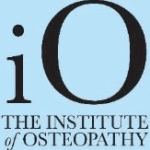Chiropractors and osteopaths are both types of healthcare professionals who focus on manual therapy to treat various musculoskeletal conditions, but there are some differences between the two professions.
- Philosophy and Origins:
- Chiropractors: Chiropractic care is based on the principle that proper alignment of the body’s musculoskeletal structure, particularly the spine, can enable the body to heal itself without surgery or medication. It was founded in the late 19th century by D.D. Palmer.
- Osteopaths: Osteopathy was founded by Andrew Taylor Still in the late 19th century as well. Osteopathy emphasizes the belief that the body’s systems are interconnected and that manipulation and manual therapy can improve overall health and wellbeing, not just treat specific symptoms.
- Treatment Approach:
- Chiropractors: Chiropractors primarily focus on adjustments or manipulations of the spine and other joints to restore proper alignment and improve function. They often use techniques such as spinal manipulation, mobilization, and soft tissue therapy to treat conditions like back pain, neck pain, headaches, and more.
- Osteopaths: Osteopaths also use manual therapy techniques like manipulation and mobilization, but they tend to take a more holistic approach, considering the body as a whole. They may incorporate additional techniques such as stretching, massage, and exercises to address not only musculoskeletal issues but also other bodily systems.
- Education and Training:
- Chiropractors: Chiropractors typically undergo a four-year Doctor of Chiropractic (D.C.) degree program after completing undergraduate studies. Their training focuses heavily on anatomy, physiology, diagnosis, and manual therapy techniques.
- Osteopaths: Osteopaths can follow different educational paths depending on the country they practice in. In some countries, osteopaths complete a four to five-year Doctor of Osteopathic Medicine (D.O.) program, which is similar to medical school but with additional training in osteopathic manipulative medicine. In other countries, osteopaths may complete a bachelor’s degree followed by a Master’s in Osteopathy (M.Ost) or similar program.
- Scope of Practice:
- Chiropractors: Chiropractors primarily focus on diagnosing and treating musculoskeletal conditions, especially those related to the spine. They may also provide advice on posture, exercise, and lifestyle modifications.
- Osteopaths: Osteopaths also treat musculoskeletal conditions, but they may have a broader scope of practice and can also diagnose and treat other health issues. Some osteopaths may prescribe medication or perform minor surgical procedures, depending on their training and the regulations in their jurisdiction.
In summary, both chiropractors and osteopaths are manual therapy practitioners who focus on treating musculoskeletal conditions, but they have different philosophies, treatment approaches, educational backgrounds, and scopes of practice. It’s essential to choose the healthcare professional that aligns with your specific needs and preferences.





